Editor's Note: Peter's continuing exploration of the history of motorsport and its implications for the future of racing is proving to be very popular, so we are going to leave this column up for another week. -WG
By Peter M. DeLorenzo
Detroit. In continuing my exploration of the history of motorsport, I'd like to point out that this isn't an exercise in dwelling in the past. I feel it's critically important to remember where we've been, before we can understand where we want to go. Many of my followers on Twitter (@PeterMDeLorenzo) are shocked to see some of the historical aspects of the sport for the very first time. They are discovering the rich legacy of the sport and how many ideas in racing have been done before, and to great effect.
One particularly shocking discovery for many enthusiasts was the AVUS circuit in Berlin, with its steeply banked (43°) North Curve made entirely of bricks.The daunting curve became known as the "Wall of Death," because there was no retaining barrier so cars that missed the turn easily flew off it and right out of the circuit. The 1937 race at AVUS did not count for the F1 World Championship, so non-GP cars were allowed. The factory German teams of Auto Union and Mercedes-Benz brought specially-built streamlined cars to contest the event. This race was run in two heats, and during qualifying for the second heat, Luigi Fagioli put his Auto Union Type C on the pole with a time of 4 minutes and 8.2 seconds at an average speed of 174 mph - which was the fastest motor racing lap in history at that time. And Hermann Lang pushed his Mercedes-Benz to an average race speed of 171 mph, which was the fastest road race in history for nearly five decades, and was not matched on a high speed circuit until the mid-1980s at the 1986 Indianapolis 500. Think about that for a moment. Incredible.
The lessons learned in the past will play an essential role in balancing the burgeoning technical demands of the sport, while at the same time not degrading the visceral appeal of the sport. This balancing act has, to me, become paramount. Yes, we are immersed in the shifting winds of a society that doesn't embrace motorsport as it once did, but still, if the powers that be don't come together to take the steps necessary that will ensure the sport's survival, then we have to embrace the real possibility that the sport will continue to get smaller, except for the few exceptional events.
That's the High-Octane Truth for this week.
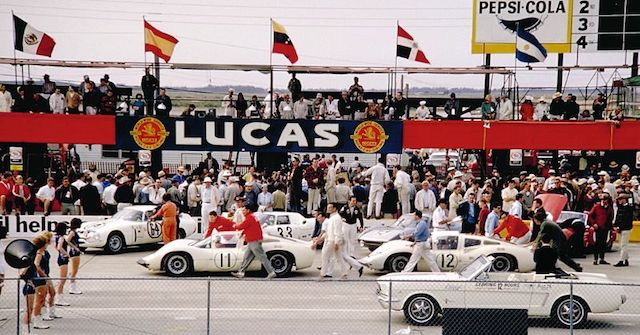
(Sports Car Digest)
12 Hours of Sebring, March, 26, 1966. The Chaparral Cars team being pushed to their starting positions. The No. 11 Chaparral 2D Chevrolet was driven by Jim Hall/Hap Sharp, and the No. 12 Chaparral 2D Chevrolet was driven by Phil Hill/Jo Bonnier.
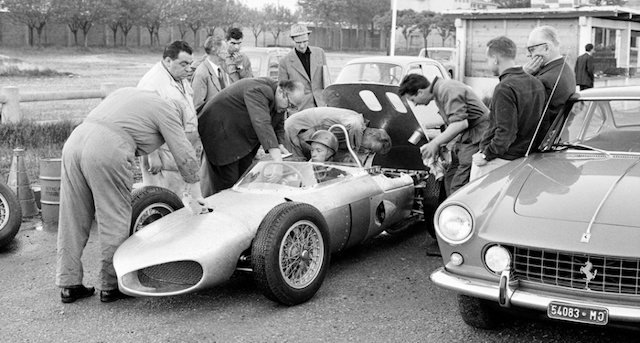
(Getty Images)
Enzo Ferrari looks on as American Richie Ginther prepares to take out the new Ferrari 156 for a run, 1961.
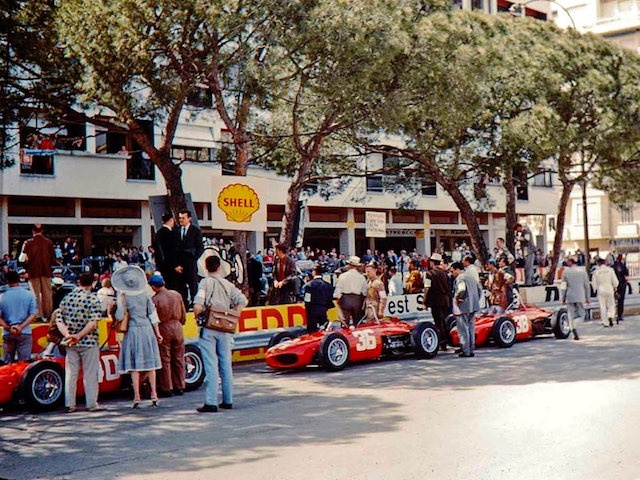
Scuderia Ferrari at the Monaco GP, 1961. Wolfgang von Trips (No. 40 Ferrari 156); Richie Ginther (No. 36 Ferrari 156); Phil Hill (No. 38 Ferrari 156). Stirling Moss (No. 20 Lotus-Climax) won that year, while Ginther was second and Hill, third.
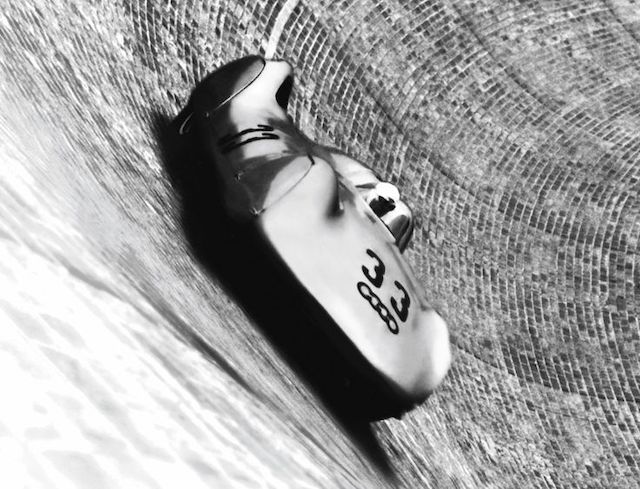
AVUS, Berlin, 1937. Luigi Fagioli put his Auto Union Type C on the pole with an average speed of 174 mph, which was the fastest motor racing lap in history at that time.
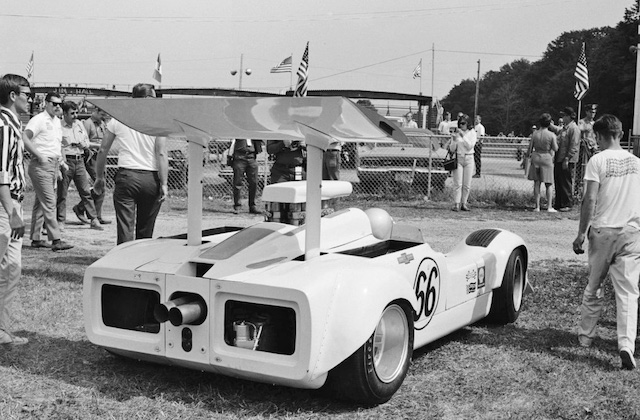
Elkhart Lake, Wisconsin, August 31, 1968. Jim Hall (No. 66 Chaparral 2G Chevrolet) heads out for practice for the Road America Can-Am.
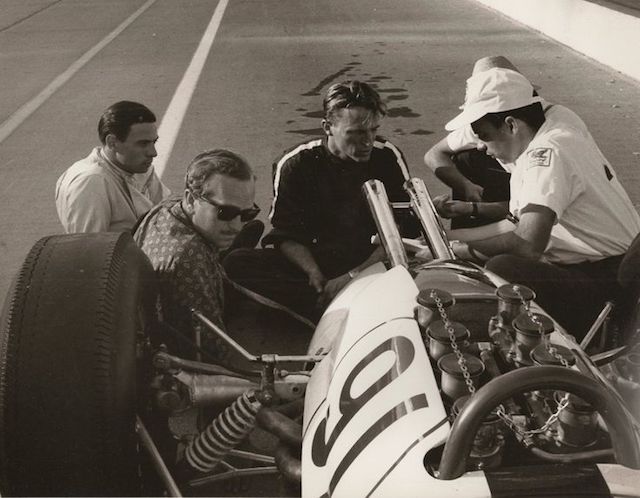
(Dave Friedman)
Indianapolis Motor Speedway, May 1963. Jim Clark, Colin Chapman and Dan Gurney looking over the back of Gurney's Lotus-Ford.
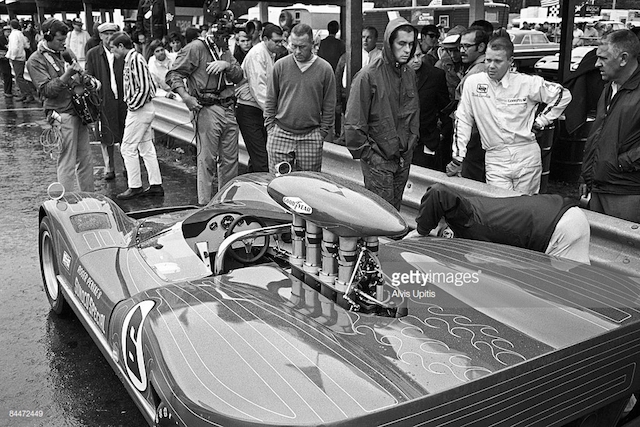
(Getty Images)
Elkhart Lake, Wisconsin, September 1968. Mark Donohue and Roger Penske stand by the No. 6 Sunoco McLaren M6B Chevrolet during Can-Am practice at road America. Mark finished third in the race.
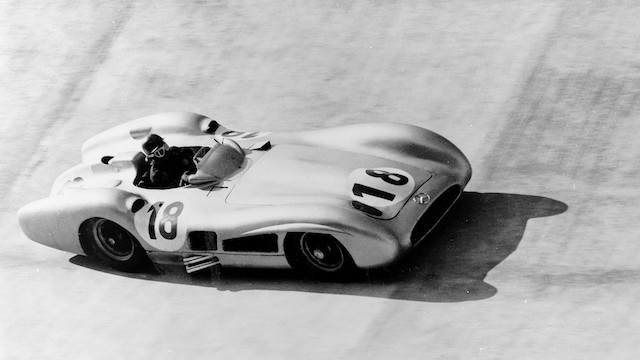
Juan Manuel Fangio in the No. 18 Mercedes-Benz W196 streamliner on his way to victory in the 1955 Italian Grand Prix.
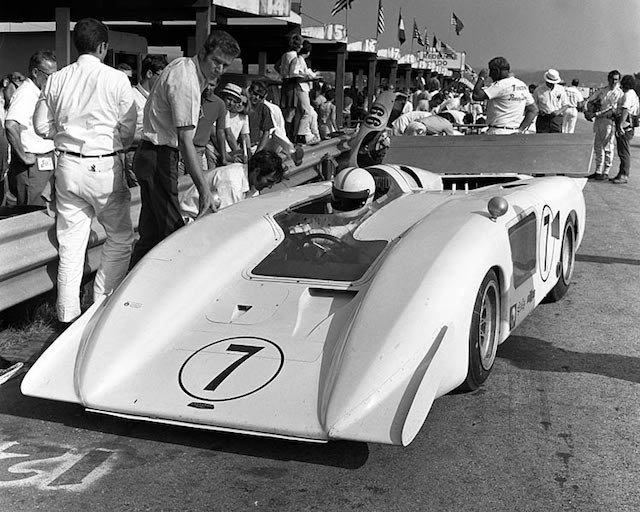
(Dave Friedman)
Elkhart Lake, Wisconsin, September, 1969. Jim Hall leans against his No. 7 Chaparral 2H Chevrolet, with John Surtees at the wheel. The 2H was a radical low drag concept Can-Am machine that proved to be Hall's only major disappointment in terms of building Chaparrals. The car was multiple seconds per lap slower than the quickest cars everywhere the car appeared. The car is stunning to look at in person to this day, but the reality is that car never worked as intended.